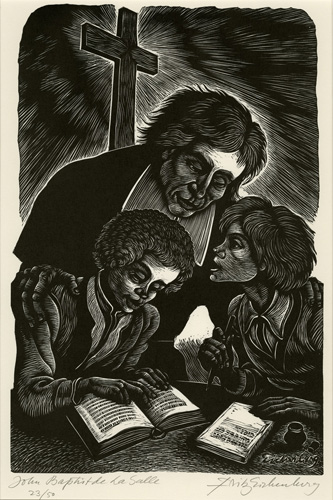Title
Preview

Description
Ramón Canto (active 19th Century), Mexican
La Malinche, 1883
Arte plumaria (featherwork) over chromolithograph
Gift of Anthony M. & Marylou S. Waltrich, Jr. (class of 1969)
Collection of La Salle University Art Museum, 16-LA-106
Feathers, along with jade and turquoise, were among the objects most valued by the indigenous peoples of Mesoamerica since Pre-Columbian times. In Mexico, the artistic use of feathers was extremely important and sophisticated. Feathers were symbols of fertility, wealth, power, and the divine. Numerous conquistadors and missionaries who visited the New World during the colonial period commented on the exquisite nature of featherworks, noting how the feathers were so bright and vibrant they appeared to be painted. Though the craft continued after independence was achieved from Spain in 1821, it became increasingly difficult to obtain the prized feathers as many birds were no longer collected and became extinct or endangered.
This unique featherwork piece from the 19th century follows the artistic trend during this period of applying feathers to an existing print. This print depicts the first encounter between the Spanish conquistador, Hernán Cortés, and the Aztec emperor, Montezuma II. Malinche, Cortés’s interpreter and mistress, is positioned between the two leaders. How are the figures portrayed? What does this reveal about their roles in this event? Careful observations help us discern the subject matter and, in particular, reveal how history is recounted pictorially. This artwork also opens up discussion to diverse perspectives of the history of the colonialization of Latin America. In other words, whose perspective of the conquest is represented here? In addition, the medium of featherwork gives us the opportunity to examine firsthand the application of this unique artistic technique. How is featherwork used to aid our understanding of the event? Careful observation of the medium helps us see how artistic choices can convey meaning and contribute to the narrative. Thoughtful study of this Mexican art object increases our cultural and global awareness.
Mey-Yen Moriuchi, Ph.D.
Assistant Professor of Art History, Department of Art
Broader Identity
- 1. Understanding Diverse Perspectives
Effective Expression
- 9. Creative and Artistic Expression
Active Responsibility
- 11. Cultural and Global Awareness and Sensitivity
See this object in the Art Museum Online Collections Database:
http://artcollection.lasalle.edu/Obj8090
Rights
Collection of La Salle University Art Museum; http://artcollection.lasalle.edu/kiosk/rights.htm


